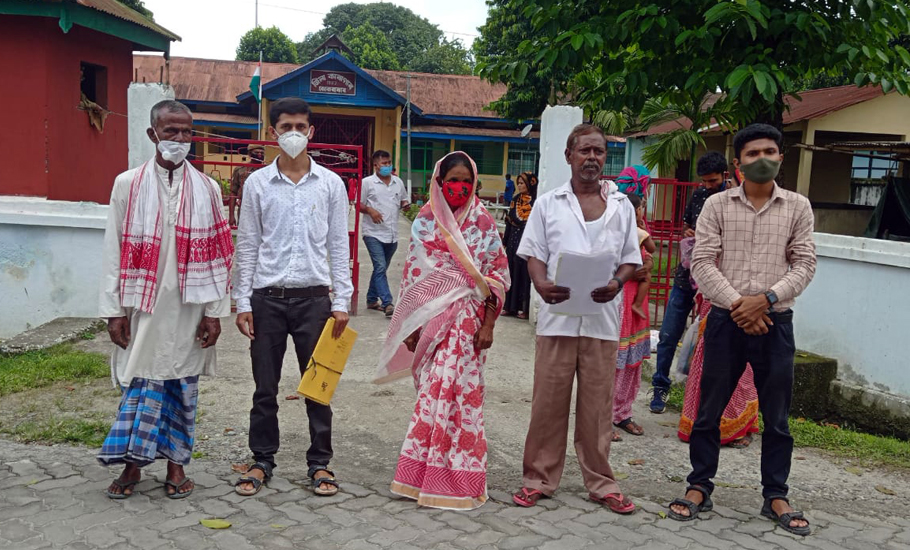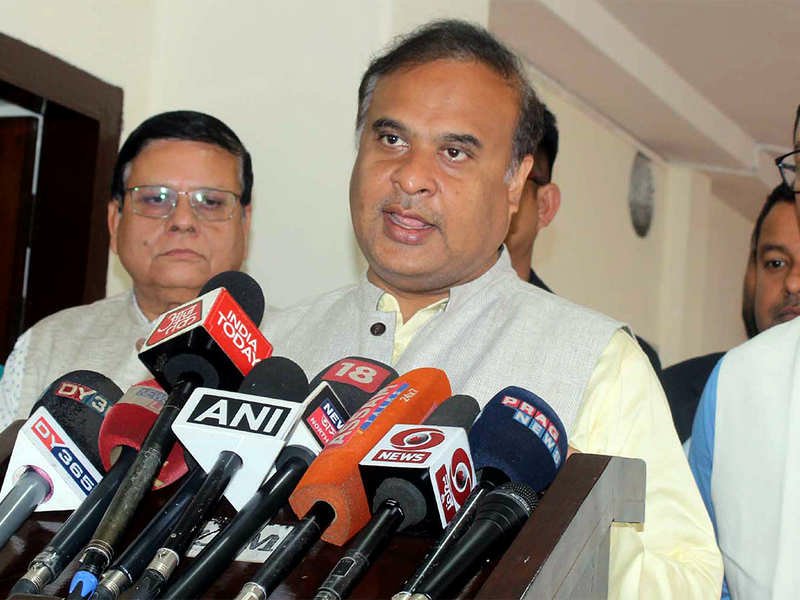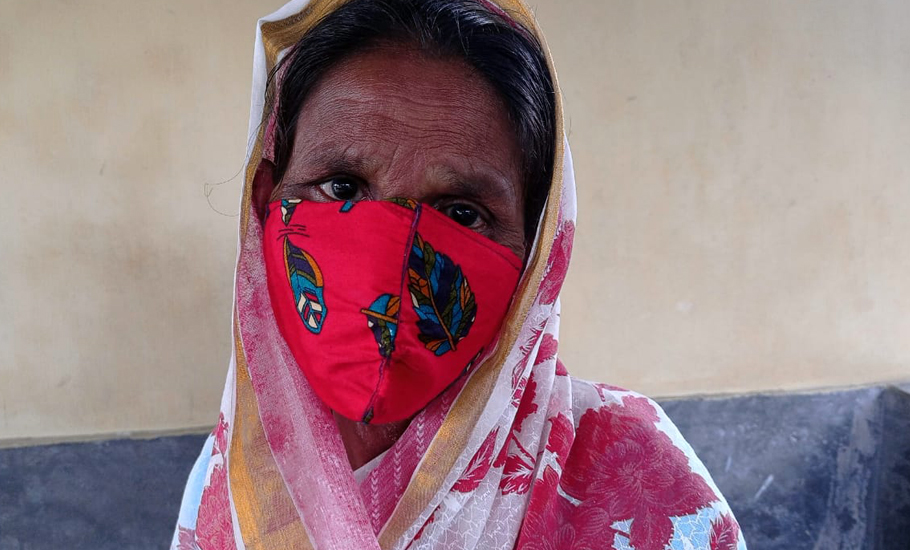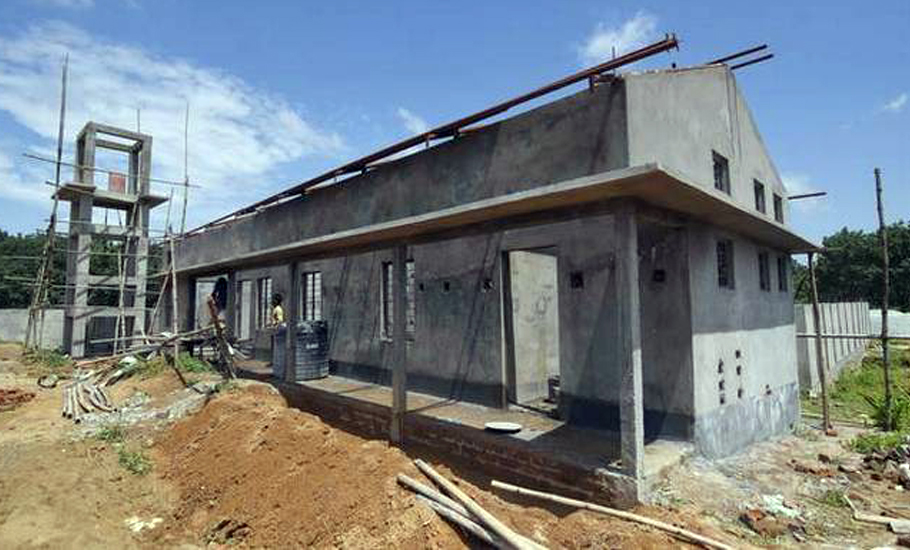
- Home
- News
- Analysis
- States
- Perspective
- Videos
- Education
- Entertainment
- Elections
- World Cup 2023
- Features
- Health
- Business
- Series
- Economy Series
- Earth Day
- Kashmir’s Frozen Turbulence
- India@75
- The legend of Ramjanmabhoomi
- Liberalisation@30
- How to tame a dragon
- Celebrating biodiversity
- Farm Matters
- 50 days of solitude
- Bringing Migrants Home
- Budget 2020
- Jharkhand Votes
- The Federal Investigates
- The Federal Impact
- Vanishing Sand
- Gandhi @ 150
- Andhra Today
- Field report
- Operation Gulmarg
- Pandemic @1 Mn in India
- The Federal Year-End
- The Zero Year
- Premium
- Science
- Brand studio
- Home
- NewsNews
- Analysis
- StatesStates
- PerspectivePerspective
- VideosVideos
- Entertainment
- ElectionsElections
- Sports
- Loading...
Sports - Features
- BusinessBusiness
- Premium
- Loading...
Premium

Assam’s transit camps: ‘A jail is a jail is a jail’
Apart from shifting outside jails, the detention centres for illegal immigrants in Assam have been required by the courts to be equipped with basic facilities like electricity, water and hygiene.

Five years,, 11 months and 29 days. That’s 2,190 days. Fifty-five-year-old Sona Khatun isn’t particularly good with numbers but these figures are at the tip of her tongue because that’s the exact number of days she has spent cooped up inside the Kokrajhar district jail campus in Assam. Technically, Khatun was in the ‘detention centre’ for illegal immigrants within the jail campus...
Five years,, 11 months and 29 days. That’s 2,190 days. Fifty-five-year-old Sona Khatun isn’t particularly good with numbers but these figures are at the tip of her tongue because that’s the exact number of days she has spent cooped up inside the Kokrajhar district jail campus in Assam. Technically, Khatun was in the ‘detention centre’ for illegal immigrants within the jail campus after being arrested in 2015.
Freed recently, Khatun is among 57 people who were released from the Goalpara (51 inmates) and Kokrajhar (6 inmates) centres in Assam, following a Supreme Court directive to release those who have spent more than two years in detention centres.
Days after their release, Khatun and others came to know that the ‘detention centres’ in Assam have been renamed on August 19 as ‘transit camps’ in order to “humanise” them. The purpose, however, remains the same—incarceration.
Nomenclature change
Assam currently has six ‘detention centres’ within Tezpur, Jorhat, Dibrugarh Silchar (Central jails) Goalpara and Kokrajhar (district jails). Another standalone ‘detention centre’—with a capacity to house 3,000 foreigners—is under construction at Matia in Goalpara district.
On August 19, the Home and Political Department issued a notification saying the “nomenclature of detention centre is changed to transit camp for detention purpose”. The decision, many from within the government admit, followed widespread criticism over the condition of inmates and comparisons to the concentration camps in Nazi Germany.
So, the government came up with a more dignified terminology to ‘humanise’ the camps, they say. Such cosmetic changes, however, can’t change Khatun’s mind nor lessen the pain of six years of confinement.
“What difference does that make for people like me. I was punished for no crime, my life has been ruined,” Khatun tells The Federal inside her modest home in Bhalukmari village, Dhubri district.
At the time of her arrest, Khatun was working as a domestic help in Guwahati—far away from her brothers in Bhalukmari. Long abandoned by her husband, the poor, unlettered woman had come to Guwahati with the hope of making a life for herself. Instead, she found herself trapped in a maze of legal jargons and a heartless system.
Unable to defend herself, she spent the next six years in Kokrajhar detention centre. This, despite the fact that her father’s name was very much there in the National Register of Citizens, 1951. The names of both her brothers were also there in the final National Register of Citizens (NRC) published in 2019, from which more than 19 lakh of the 3.29 crore applicants were left out.

But Khatun is not alone. Forty-year-old Fazur Ali of Goalpara district has a similar story to tell.
“I had gone to Guwahati for work leaving my pregnant wife at home. I came to know about the notice from the [Foreigner’s] Tribunal when I was there. By the time I reached home I came to know my fate was already decided,” Ali says about the ex-parte declared in his absence.
Dejected, Ali jumped into Brahmaputra river but was saved by some fishermen and admitted to the government hospital. To everybody’s astonishment, the police arrested him from the hospital itself.
“I came out two weeks ago from the Goalpara detention centre after two years in detention. My wife gave birth to our baby while I was away. They have snatched away two years of my life without having committed any crime.”
Tired and worried, Ali is left with little means to secure a future for himself and his family.
Both Khatun and Ali had given up all hopes until activists from the Citizens for Justice and Peace, a human rights organisation, came to their aid and fought their cases pro-bono.
“I feared I’ll be left to die inside the jail. Often it felt as if the walls were closing in on me,” Khatun says.
Even though those declared foreigners or detained under suspicion don’t have to share space with jail convicts, the fact that these detention centres are all housed inside the same campus blurs the line between felony and misfortune.
“Even though we were kept separately from the convicts and jail inmates, the fact of the matter is we were all in confinement. The only difference was they were held for committing some crime. Our crime is our existence,” Khatun says.
However, jail officials don’t quite agree. “There is a clear distinction between detention centre inmates and other prisoners. While regular prisoners are made to work, those in detention centres don’t have to. Also, we ensure to provide them with basic necessities like soap, cloths etc.,” says Ranjan Goweri, Additional Jail Superintendent, Kokrajhar.
Moreover, Goweri adds, these camps are temporary. “So, sometimes it’s not possible to provide all required facilities.”
Khatun agrees that she and others like her were never made to work. “But no work also means no means of earning. Also, what about the pain of being confined within the limits of the dark, dank barracks away from your family without any guarantee that you will ever be released?”

So, Khatun adds, call it by any name, it won’t change the fact that she was incarcerated for six years.
“The term detention camps conjures up images associated with Nazi-era torture. But it is important to note that the inmates in these centres have not committed any crime and they can’t be punished by being kept in detention centres,” says Habibul Bepari of the Citizens for Justice and Peace.
Nor would changing its name to transit camp wash away the injustice going on for years, he adds.
According to Bepari, most of those languishing in the centres are extremely poor and unable to challenge their detention in courts of law. Apart from being very expensive, such legal battles also take a lot of time and paperwork. The poor can’t afford to spend both money and time.
“We have come across many cases where the names of the family members, including parents, are there in the 1951 NRC. Yet the family members of the accused fear to go to the police and the Foreign Tribunals. They fear they too would be arrested and locked in the camps,” says Bepari.
The transit-ion
While many government officials have termed the renaming move as an attempt to ‘humanise’ the camps, the Gauhati High Court had earlier rapped the Assam government and directed it to move these centres outside the jail premises.
Across the six centres, according to government data, there were around 181 detainees, as of July.
Assam at present has detention centres inside jails in Goalpara, Kokrajhar, Tezpur, Jorhat, Dibrugarh and Silchar districts. All these centres were notified by the Assam government in 2009.
In a reply in the Monsoon Session of the Assam Assembly, Chief Minister Himanta Biswa Sarma, who also holds the home portfolio, had said there are 1,36,173 cases pending in the various Foreigners’ Tribunals in Assam, and 2,98,471 cases have been disposed of. Sarma also said 20 people in these centres have died due to various causes since 2009.
After a Supreme Court order in 2019, as many as 273 “declared foreigners” who had spent three years or more in the detention centres were released on bail. Soon after, another 481 who had spent two years in the centres were released following another Supreme Court order the next year.
In a directive issued last year on a petition filed by research collective Studio Nilima, the Gauhati High Court, apart from the directive to shift these centres outside jail premises, also said the government must “ensure that the places must have basic facilities of electricity, water and hygiene etc. and that there is appropriate security at these places”.
The standalone ‘transit camp’ under construction in the Goalpara district will be solely for the purpose of detaining illegal immigrants/foreigners. Once completed, all those detained in the six existing camps will be shifted to the Goalpara camp.

On August 11, the Gauhati High Court gave 45 days to the Assam government to finish the construction of the detention centre in Matia. The court accepted the government’s request to grant six weeks to complete the construction work.
According to officials in the Assam government, this camp has more than 10 blocks and can accommodate over 3,000 people, including 400 women, until they are deported—about which there is no clarity.
While India claims these detainees are illegal Bangladeshi immigrants, the neighbouring country has never been open to accepting deportation. In 2018, a top Bangladeshi official termed the NRC exercise in Assam as India’s internal affair and even claimed that Prime Minister Narendra Modi has personally assured his premier Sheikh Hasina that people excluded from the NRC list would not be sent to the country.
In all these years, India has managed to deport just four Bangladeshi and two Afghan nationals, according to a figure provided by the government in Parliament.
So, what would the Assam government do with those detained in transit camps?
According to Atul Bora, minister for Assam Accord Implementation, talks about deportation could be held with Bangladesh only by the Centre. “We have already taken this up with the Centre and we are hopeful that it will take up the issue seriously with Bangladesh.”
Until then, the voices of people like Sona Khatun and Fazur Ali will remain muffled inside the ‘high walls’ of transit camps—their fate hanging in balance.

